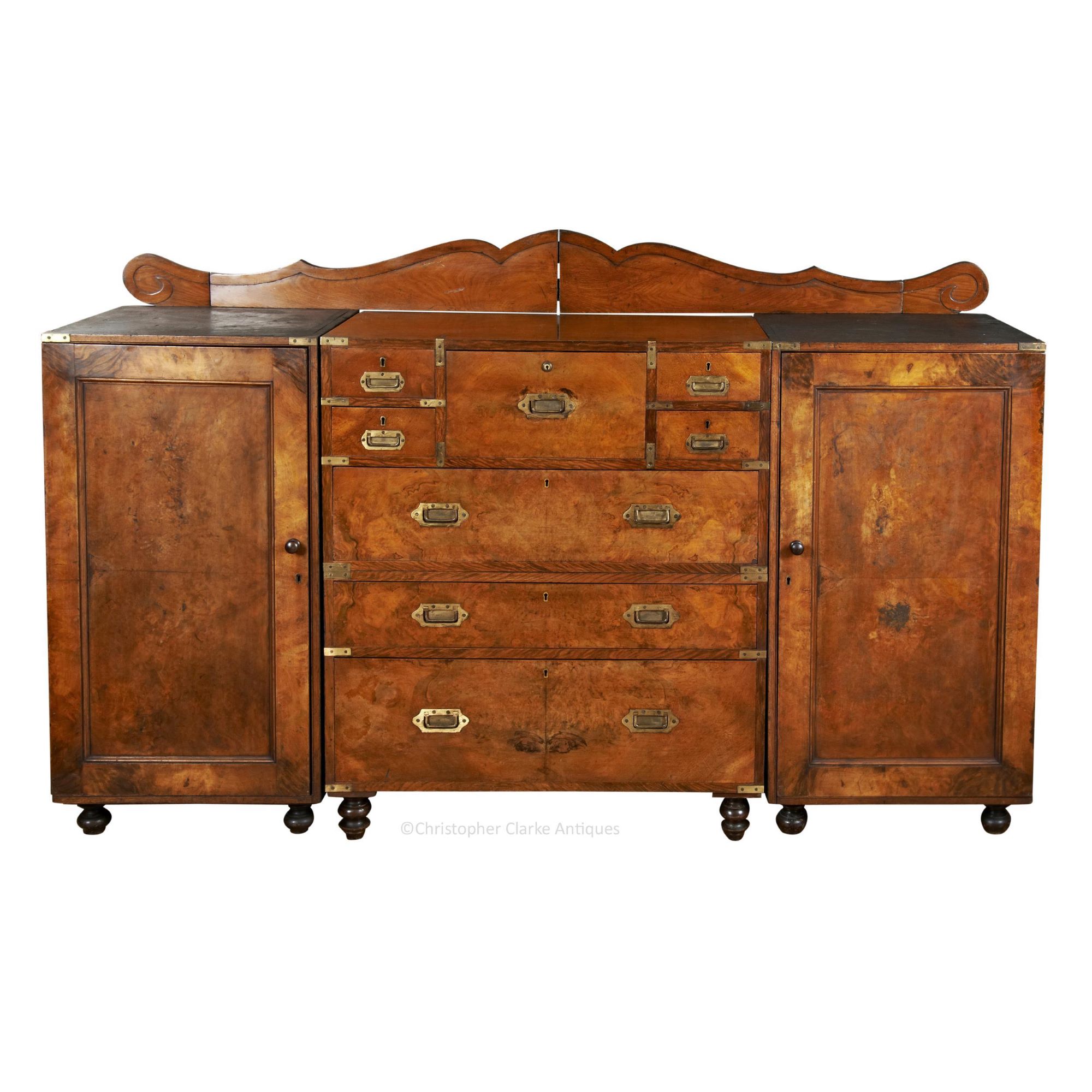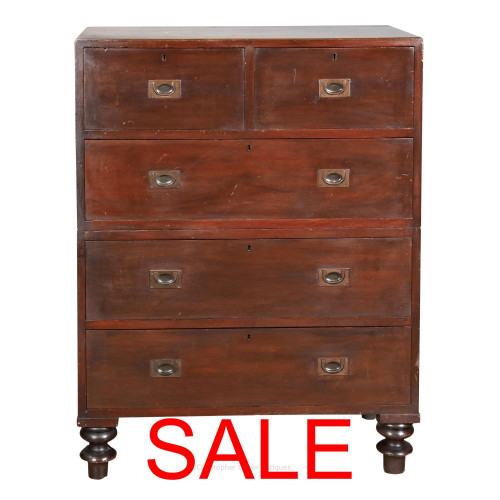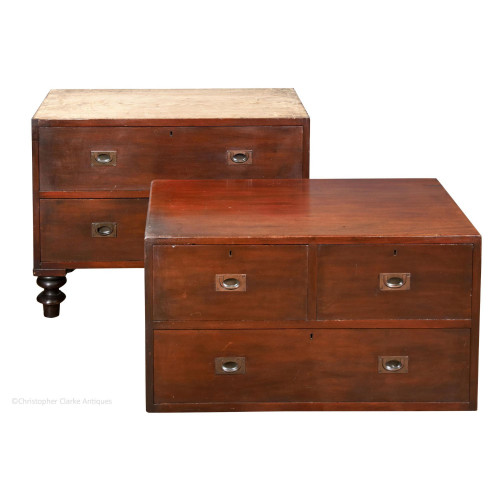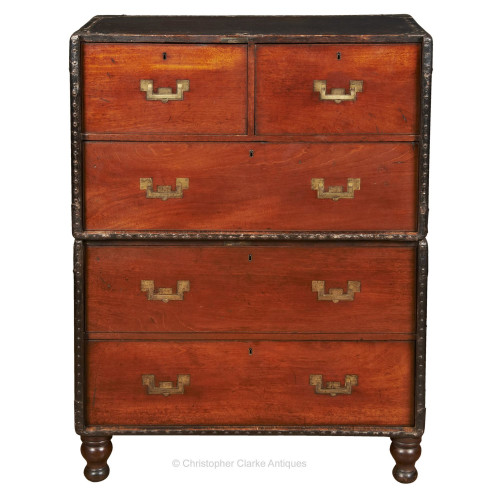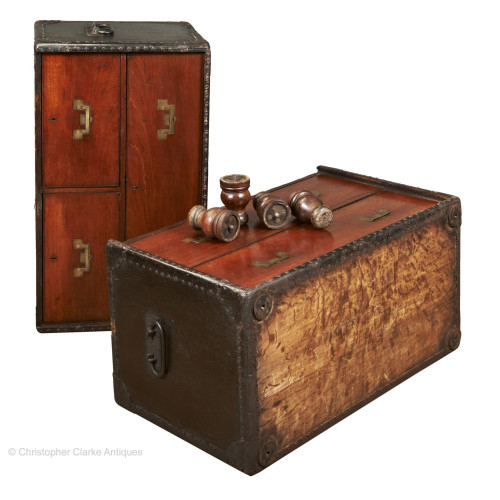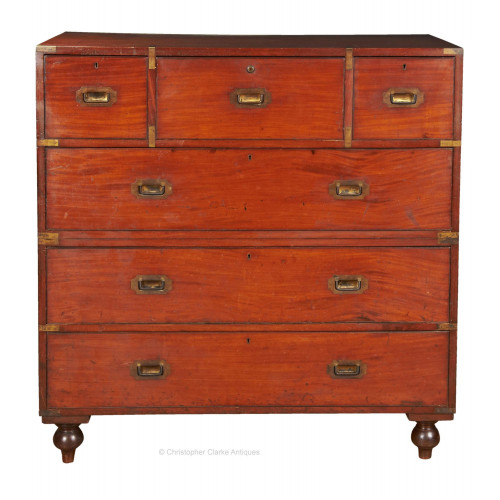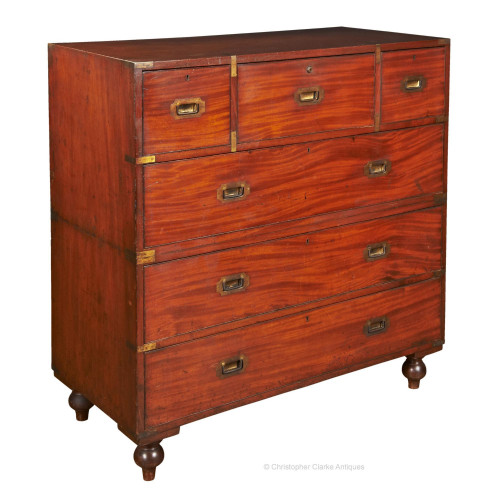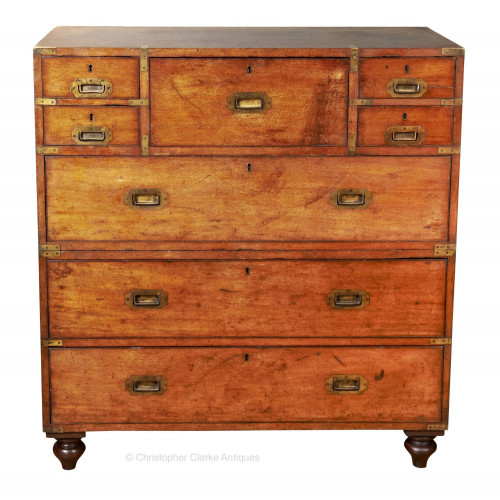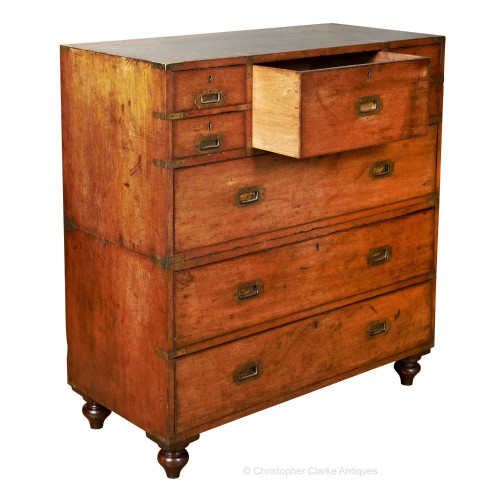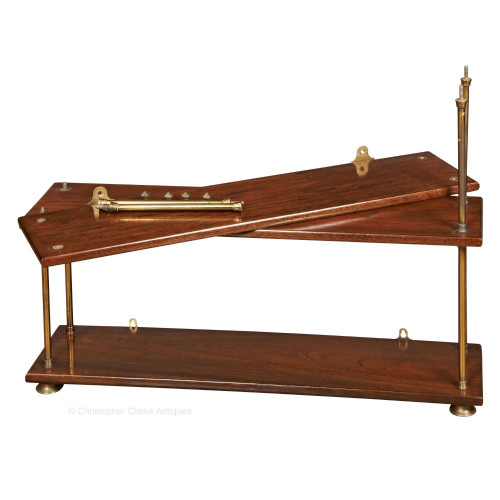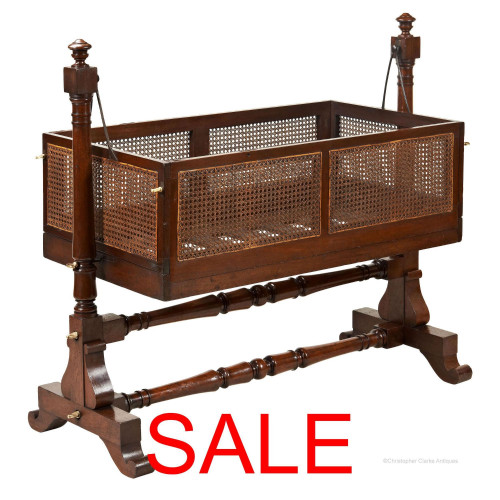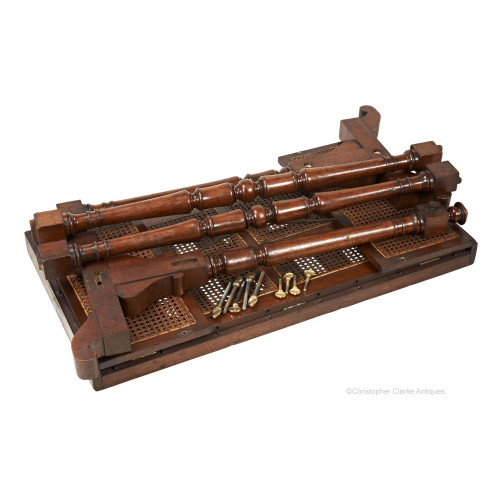Portable Drawers To Form A Sideboard
Portable Drawers To Form A Sideboard
83409
A walnut Secretaire Campaign Chest with packing cases to form a Sideboard.
When used at its full length, this is an impressive piece of campaign furniture at over 6 1/2 foot. It can also be used as three separate pieces: a chest of drawers and two pedestal cupboards. The two pedestals are the packing cases for the chest during travel but at camp would be bolted to either side of the chest. As they are deeper than the chest (to allow it to be packed inside), the chest and cupboards are lined up to the front which leaves a space to the back of the chest. A hinged board, with slide bolts that lock to the cupboard sides and lugs that locate to the back of the chest, fills this space. A shaped cresting rail, hinged to three places, is fixed to the back to unite the three parts.
This Sideboard Campaign Chest stands out for two reasons: it has figured walnut to the front and straight grain walnut to the chest sides and it has a short secretaire drawer. Normally these Sideboard Chests are mahogany, and the drawers are plain. Figured walnut with a secretaire would have been, and still is, the smartest version you could buy. The secretaire has one long and two short drawers with a pair of pigeonholes. At some stage, two tin drawers have been made to fit these pigeon holes. The secretaire drawer still has its retainer board to prevent the internal drawers moving during transport and has a Bramah lock with key. All the other drawers have ash linings with quadrants and locks that work with the same key. The cupboards also have their own key. The straight grain walnut between the drawers, and other places, have original paint work to simulate the figured walnut.
The chest and cupboards all have removable feet on wooden threads and the knob handles to the cupboards also unscrew. The cupboards only have show wood to their doors with the rest painted pine or deal. Originally, they would each have had two linen slide drawers, long since gone. They would also have had painted pine or deal boards that would bolt onto the front of the doors to protect them. The tin strips that would also protect the cupboard edges have, at some point, been removed.
A few different makers offered this version of the Campaign Chest. J.W. & T. Allen offered a Portable Mahogany Drawers to form a Sideboard at £ 14 in their January 1855 catalogue. They noted that the packing case cupboards could also be used to form a separate sideboard with a Dressing Table or washstand to the centre. In 1883, the Army & Navy CSL's catalogue described it as a 'Portable Mahogany Sideboard Drawers … forming a complete wardrobe' and priced it at £ 13 10s. More money could be spent to supply screw in legs on castors to turn one of the protective cupboard boards into a table. Both cupboard boards could also be united to form the top of a large table with a mahogany pillar and claw tripod base.
It's not known if the father James or the son Elliot bought this Sideboard Chest. Its date could fit in with either of them and it's entirely possible that James bought it for his army service and then Elliot later used it in South Africa although unlikely that he used it in the Great War. More often than not these chests are separated from their cupboards so to not only find them together but also with a secretaire to the chest and in walnut is noteworthy. The interesting provenance adds to its appeal. Mid to late 19th Century.
James & Elliot Bell
By repute, this Chest belonged to Elliot Bell, born in Perth to James and Jane Bell in 1860 but it could equally have first been owned by his father. James Bell enlisted as an Assistant Surgeon on the 1st of April 1853 and not long after saw action in the Crimea with the 79th Highlanders. He was at Balaklava and the Siege and Fall of Sebastopol, earning a medal with two clasps and the Turkish medal for his service in the Eastern campaign. He moved to the 93rd Sutherland Highlanders and then the 5th Northumberland Fusiliers. He became a Surgeon on the 14th of January 1862. In 1868 James was on half pay. In 1871 he was living with his family in Barony, Lanarkshire and practising as a Dental Surgeon. He died in 1888.
The family that owned this chest also have a number of medals including one for the Cape of Good Hope 1877-78 and the South Africa medal with two clasps for Basutoland and Transkei. The only Bell to receive the medal with both clasps was an E. Bell who was a Lieutenant in the George Burghers Regiment and then Harvey's Horse. So it seems that Elliot Bell was in South Africa as a young officer. There is a gap in the available information on Elliot and we next find him arriving in New York in May 1886 on board the Australia from Trieste and other Mediterranean ports. The Canadian 1891 Census puts him living in New Westminster City, BC in Canada. By 1896, he had returned to Britain with his wife Annie and son, as his two daughters were born in Edinburgh in 1896 and 1898. By 1911, the family were living south west London and he was stationery travelling salesman. He enlisted in the Prince of Wales Volunteers (South Lancashire Regiment) and in September 1914 he was given the temporary rank of Captain. He fought with the regiment in the Balkans and received the 1914-15 Star medal, the Victory medal and the British War medal. He was made a temporary Major in 1916.
Dimensions:
Mid to late 19th Century.
Figured & straight grain walnut. Painted pine.
England
James & Elliot Bell
Tin edging removed. Cupboard shelves missing.
RELATED ITEMS

